South Sea Pearl Inclusions Guide: Genuine Forms On List!

Whether it’s marks, spots, bumps, pinpricks, or bullets, pearl inclusions are a natural process that affects the pearl grading. Even inclusions interrupt surface smoothness and show the authenticity of South Sea pearls.
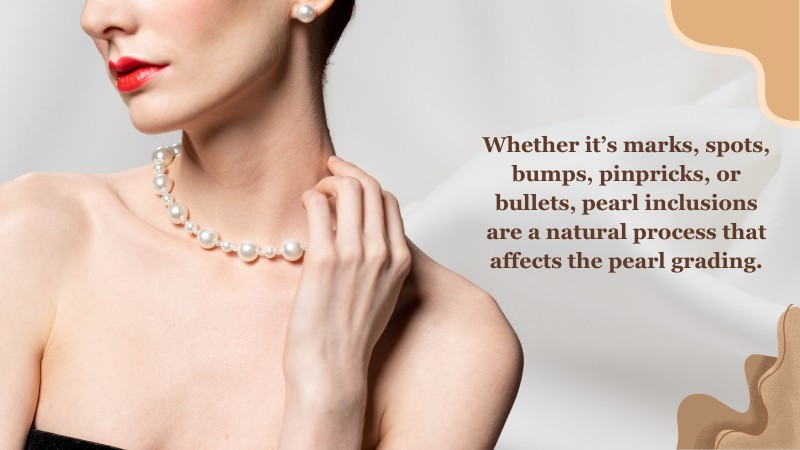
In addition, inclusions are more or less visible on any pearl type; count on grading the pearls for jewelry. Besides, these growth characteristics affect the luster, showing minor color variations.
Want more about fancy-sounding jewelry terms? Please scroll through our inclusions guide to understand the surface marks and pick the authentic one.
Do Inclusions Interrupt Surface Smoothness?
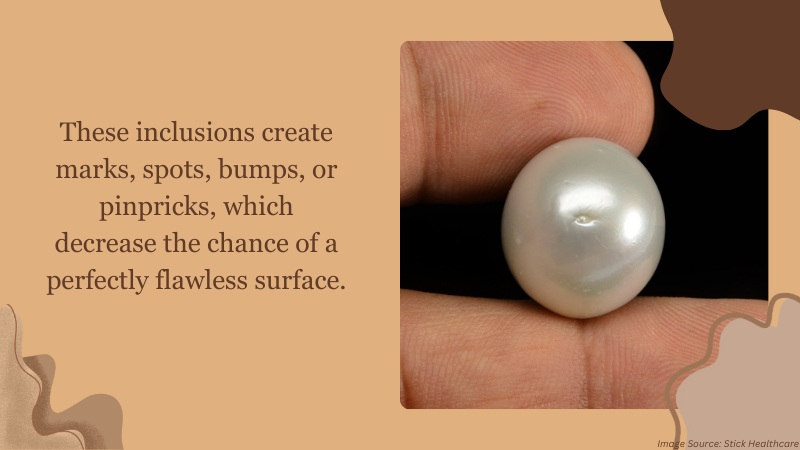
During the formation of nacre, an uneven growth shows inclusions or blemishes that interrupt surface smoothness. These inclusions create marks, spots, bumps, or pinpricks, which decrease the chance of a perfectly flawless surface.
Moreover, the uneven nacre formation causes dull pearl luster, resulting in minor variations in overtone and color. Further, minor flaws from scratches, bubbles, or scuffs affect the pearl grading process for jewelry.
Different Inclusion of South Sea Pearls
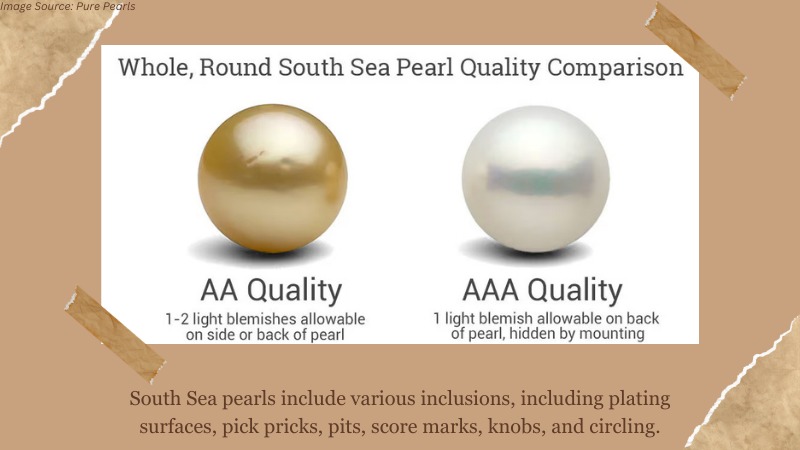
South Sea pearls include various inclusions, including plating surfaces, pick pricks, pits, score marks, knobs, and circling. Let's dig into these inclusions in detail.
Plating Surface
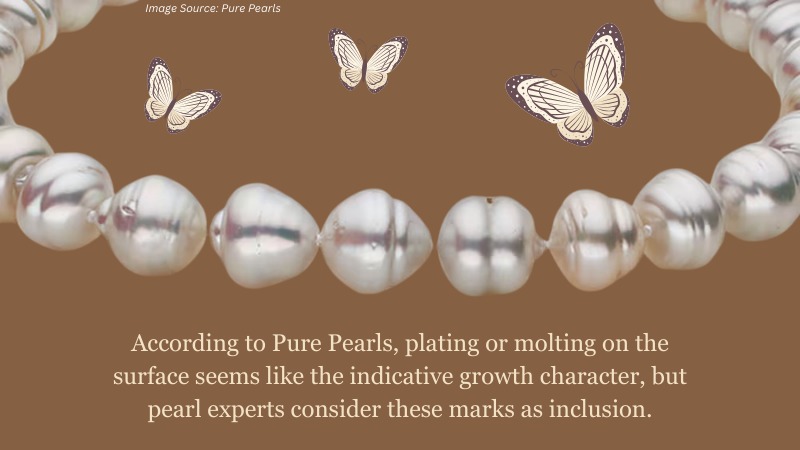
While noticing upon up-close inspection, plating or molting shows a tiny hammer repetitively hitting marks with a subtle texture on the pearl surface. Due to the thick nacre layering, a plating can offer the same nacre color as the outer pearl surface.
According to Pure Pearls, plating or molting on the surface seems like the indicative growth character, but pearl experts consider these marks as inclusion. Hence, the plating or molting marks count on grading the pearls for jewelry.
Pin Pricks
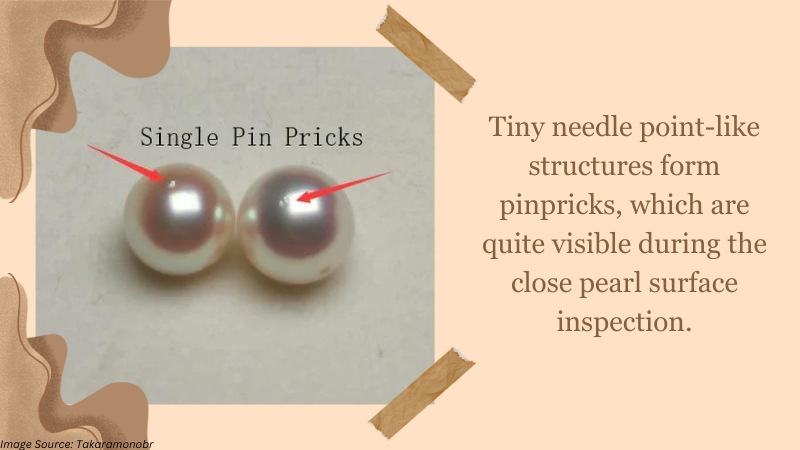
Tiny needle point-like structures form pinpricks, which are quite visible during the close pearl surface inspection. In short, the pencil poke pricks may form clusters by grouping 3 to 5 prick points.
On top of that, pinpricks are more or less visible on any pearl type, making the pricks the most common inclusion on the pearl surface. For grading of South Sea pearls, small pinprick clusters impact the quality.
Deep Pits
Deep pits are circular indents that create a slightly grainy texture on the surface and minor blemishes. Though these pits are invisible to the naked eye, they are more significant than a single pin-prick.
In addition, pits can create chipping or sharp edges, the same as a formation of pinpricks on the pearl surface. So, the minor pits become invisible by the nacre cover and pearl color, which won’t affect the pearl gradings.
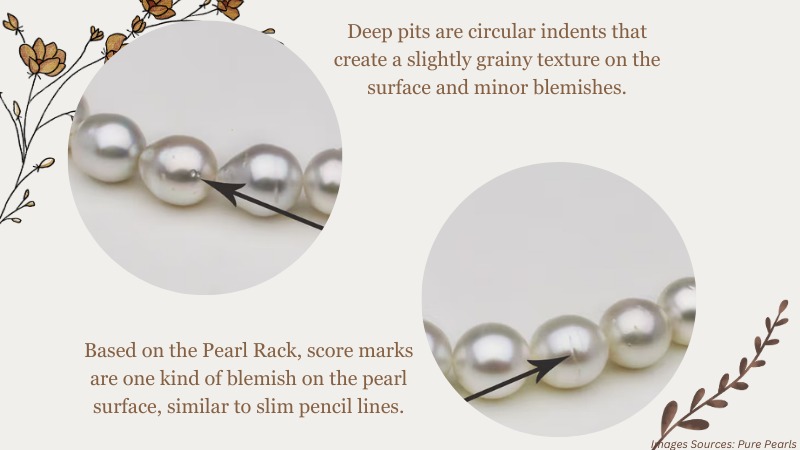
Score Marks
Based on the Pearl Rack, score marks are one kind of blemish on the pearl surface, similar to slim pencil lines. Even these marks are thin on the surface and become invisible to the naked eye.
On the other hand, score marks don’t leave any color as these marks are covered with nacre layers. However, pearls with score marks come with smooth and unbroken edges, which can affect the pearl value.
Tips & Knobs
Once you’re dealing with the natural characteristics of baroque-shaped pearls, tips & knobs come in various shapes like short, long, or bubble. Due to the texture of the tips and knobs, these shapes can add a natural beauty to the surface.
Moreover, knobs have no impact on the pearl's durability but may create chipping or cracking on the pearl's surface. Hence, pearl experts don’t consider tips & knobs as inclusion while grading the pearls for jewelry.
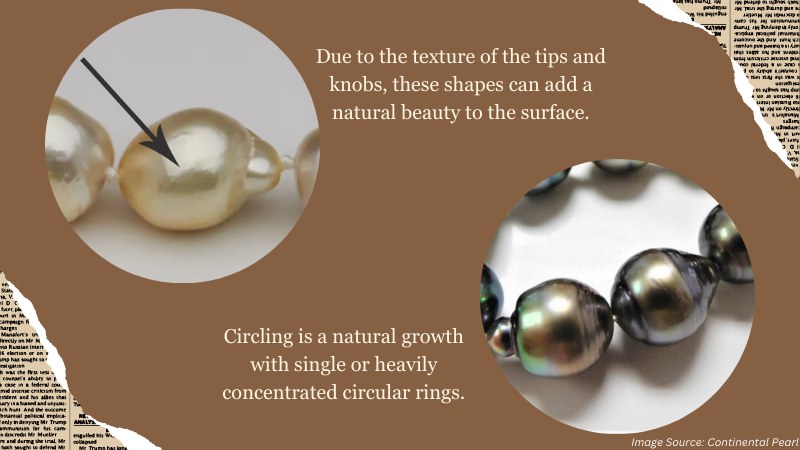
Circling
Circling is a natural growth with single or heavily concentrated circular rings. Since the growth characteristic includes tiny pinpricks or grooves, these blemishes count the circling negatively on grading the pearl.
Further, the circles of love imbued a unique appeal to the pearl, while the rings support shapes for grading on different counts.
Uneven Nacre
During the smooth nacre layering, uneven or disturbed layers cause bumps, ridges, and pointy surfaces. Cultivators get a perfect and shiny pearl if the layers of nacre form perfectly.
However, fluctuations in temperature, wave variation, and environmental factors interrupt the nacre layering that causes blemishes.
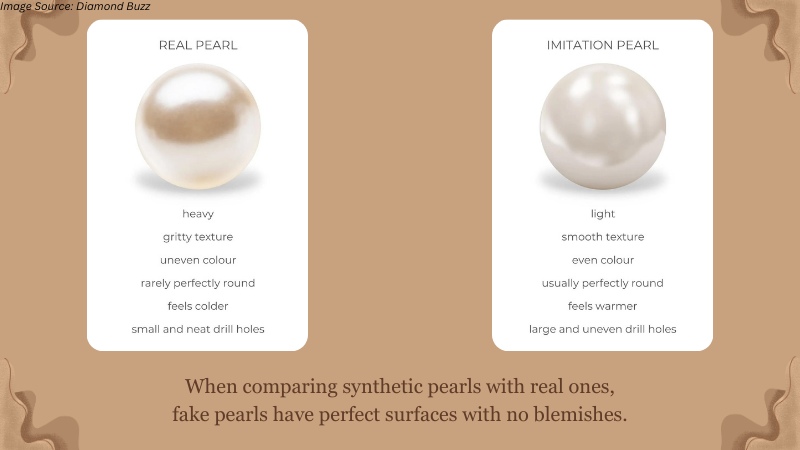
How South Sea Pearl Inclusions Show Authenticity?
When comparing synthetic pearls with real ones, fake pearls have perfect surfaces with no blemishes. In short, these identical pearls offer a sharp top layer with no visible mark or spot on the surface.
On the other hand, pearl inclusions are natural characteristics that feature marks, spots, bumps, pinpricks, or bulleting on the pearl surface. Because of these feature marks, it becomes easy to identify authentic South Sea pearls.
Further, pearl experts inspect the inclusion to find the perfect one and make the finest pearl necklace, pendants, or earrings.
Wrap Up
Plating or molting shows a tiny hitting mark with a subtle texture, whereas pinpricks are small needle-point-like structures. In short, inclusions form clusters and create fine texture on the outer layer, identifiable by rubbing a finger on the pearl surface.
Due to the more or less visibility of inclusions on the South Sea pearl, the natural process affects the pearl grading. So, pick authentic pearl jewelry to evoke natural charm with luminous beauty!


Leave a Comment